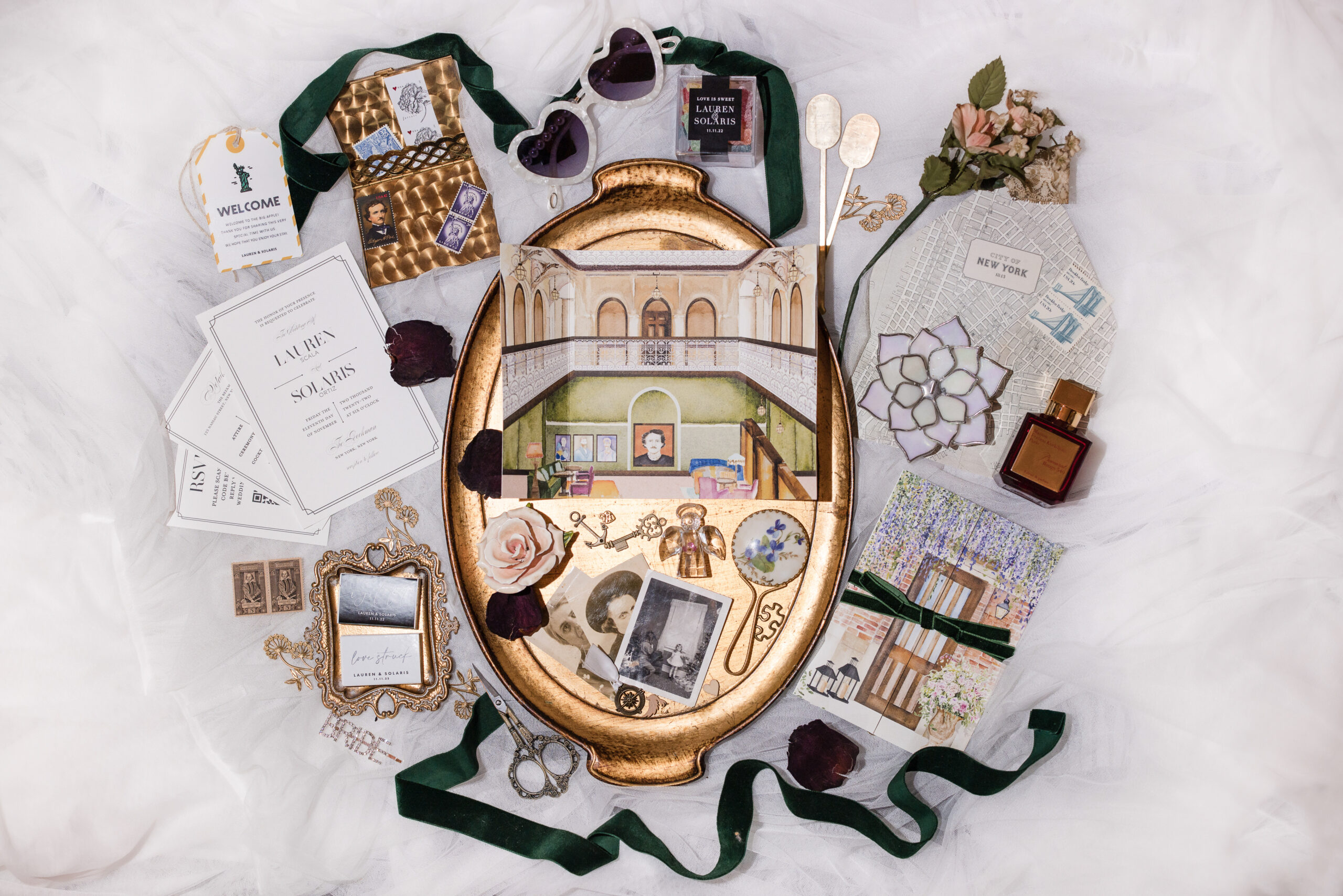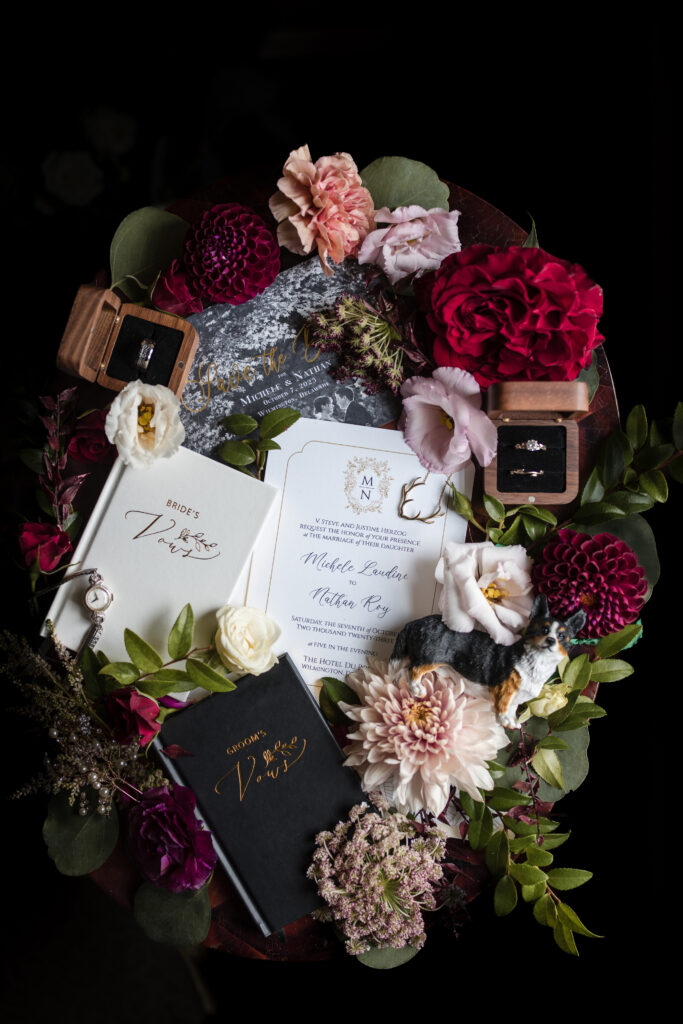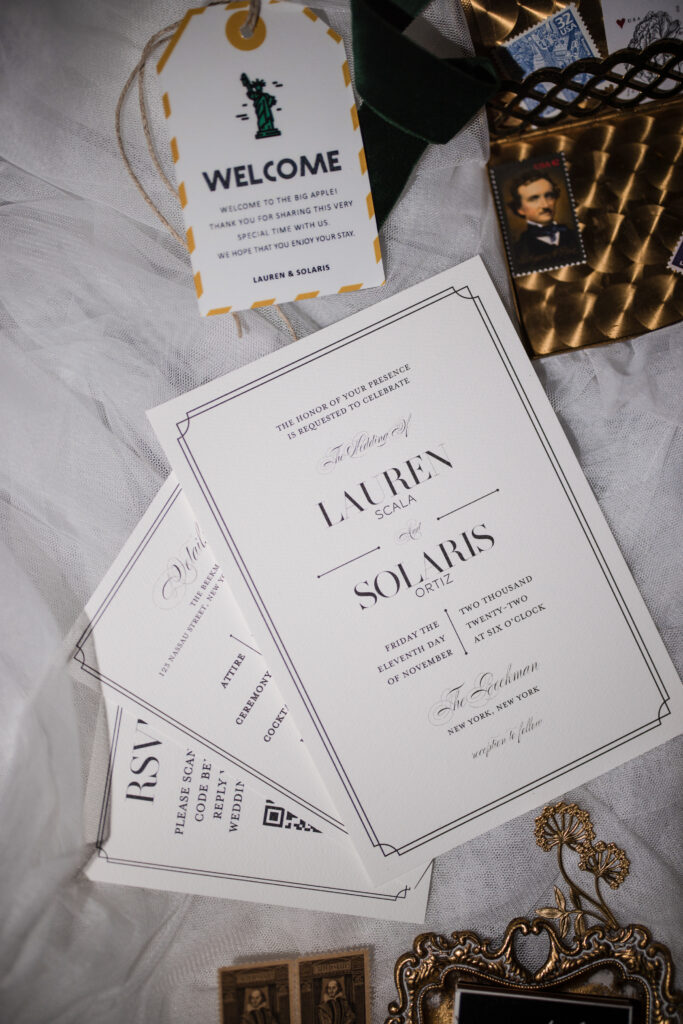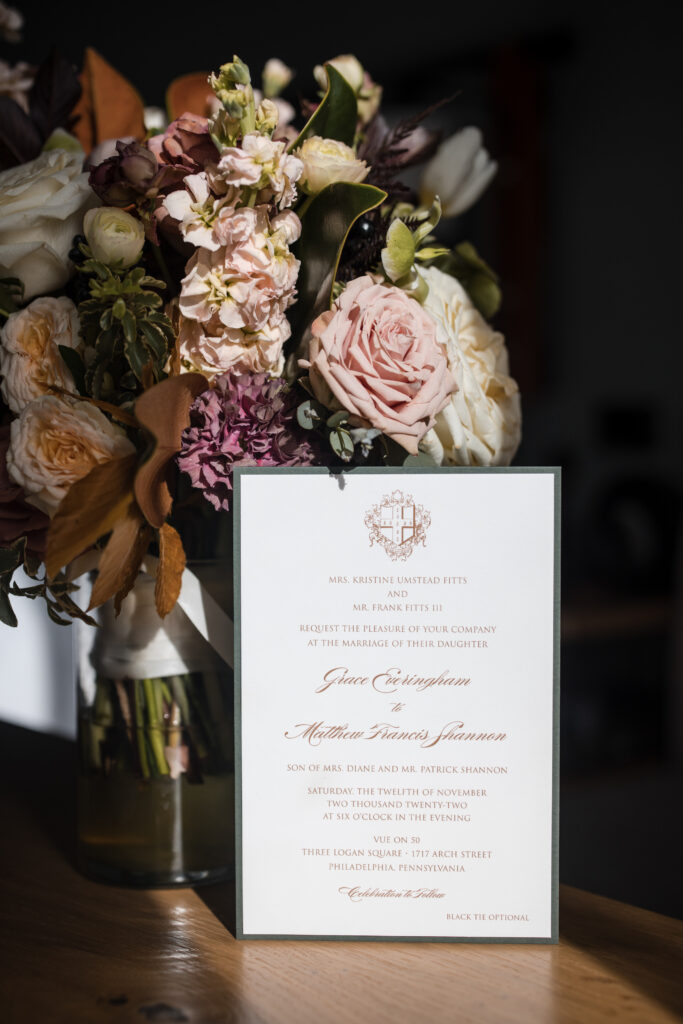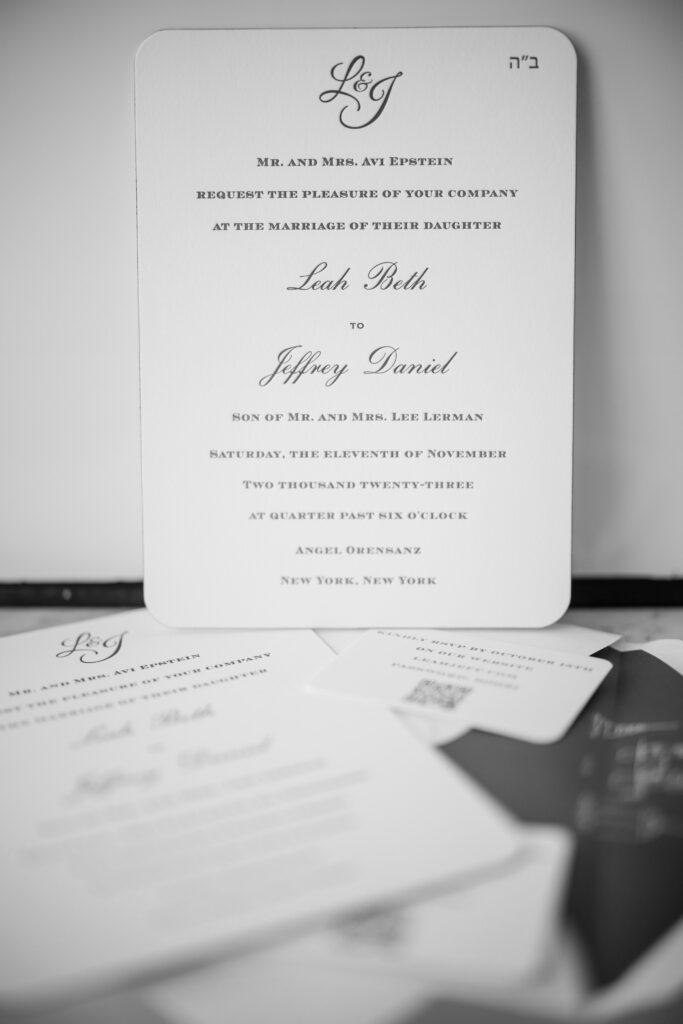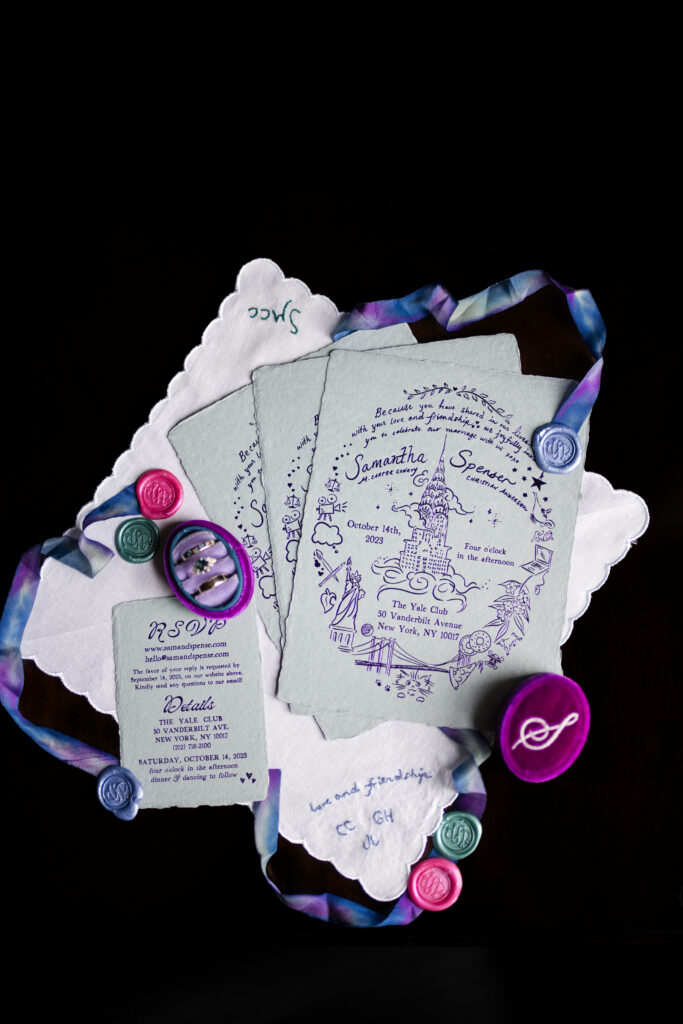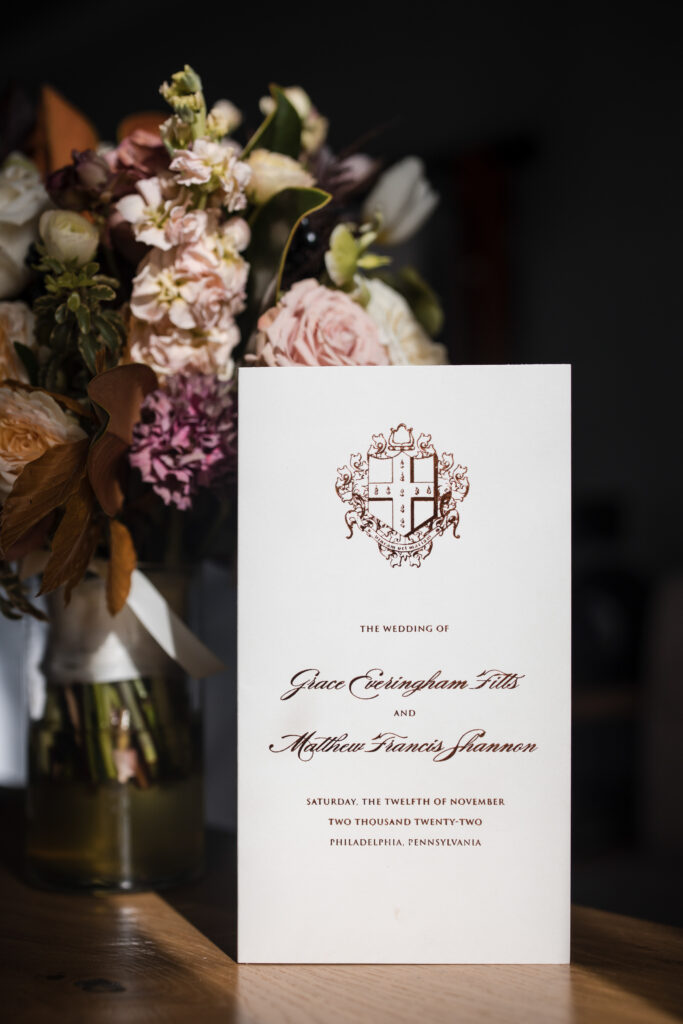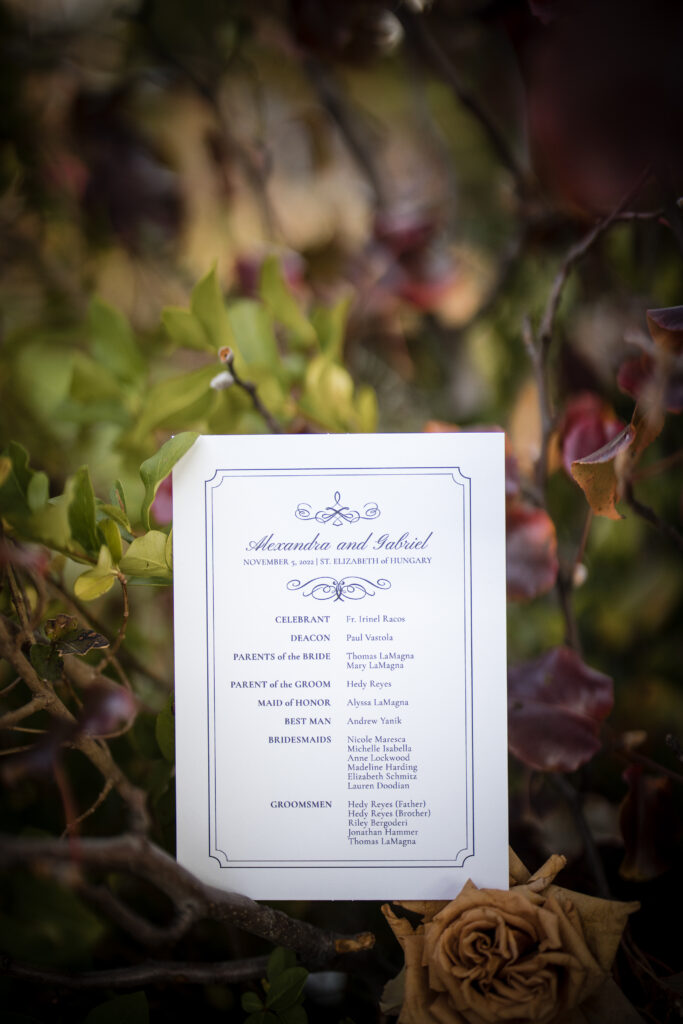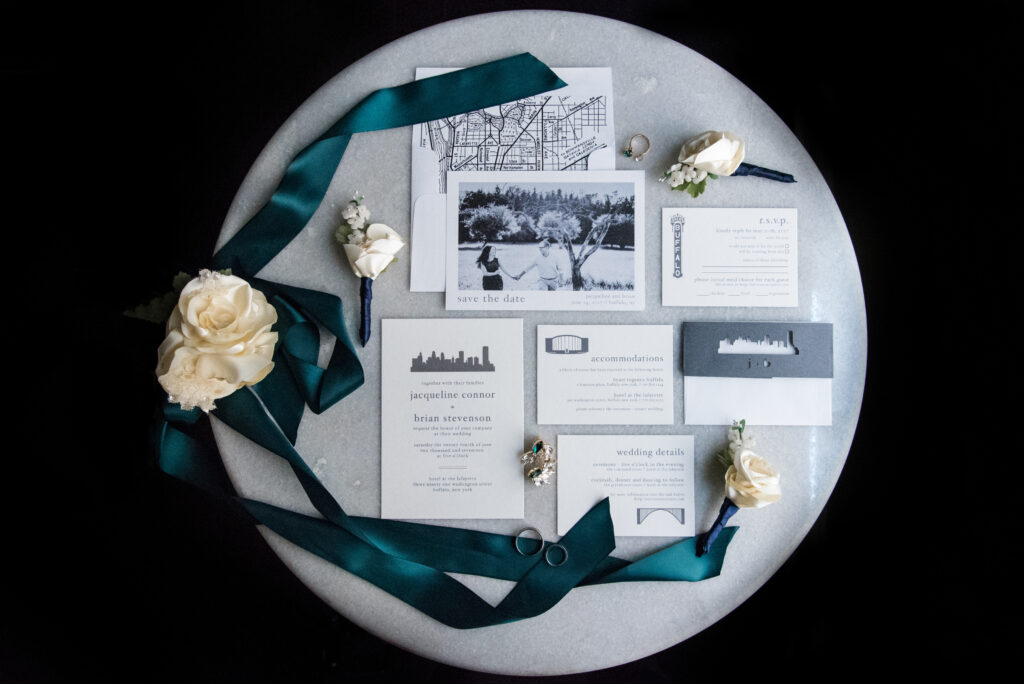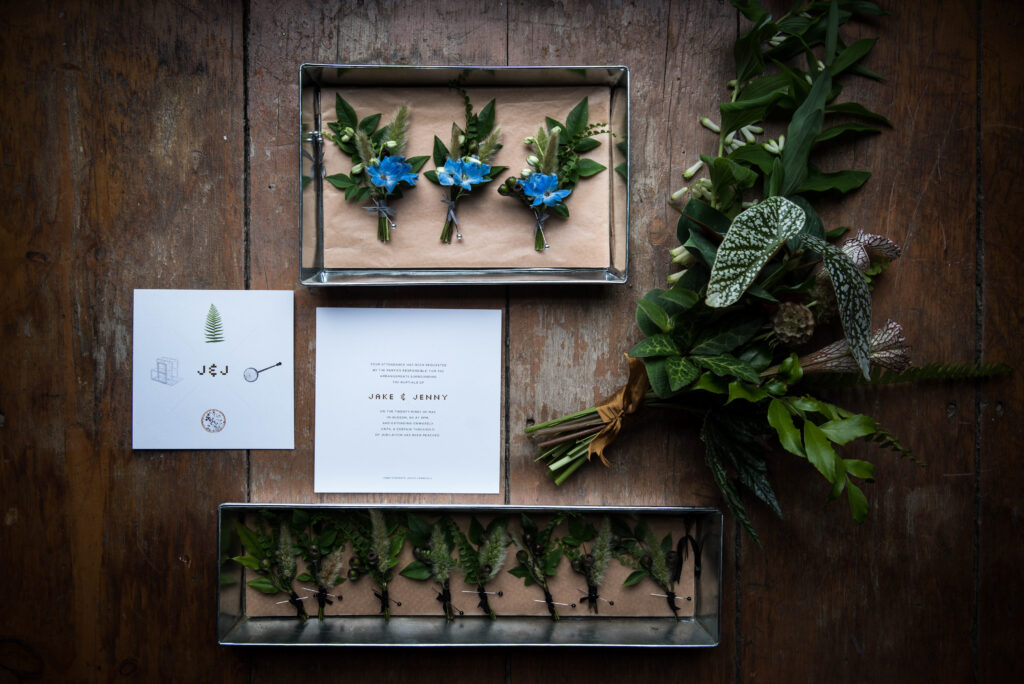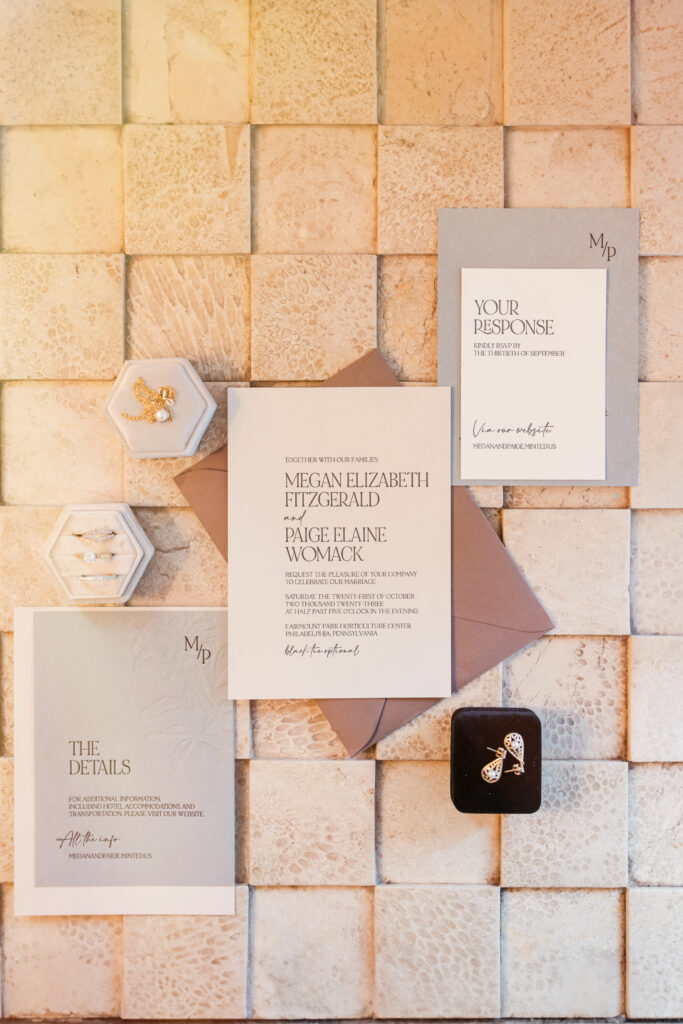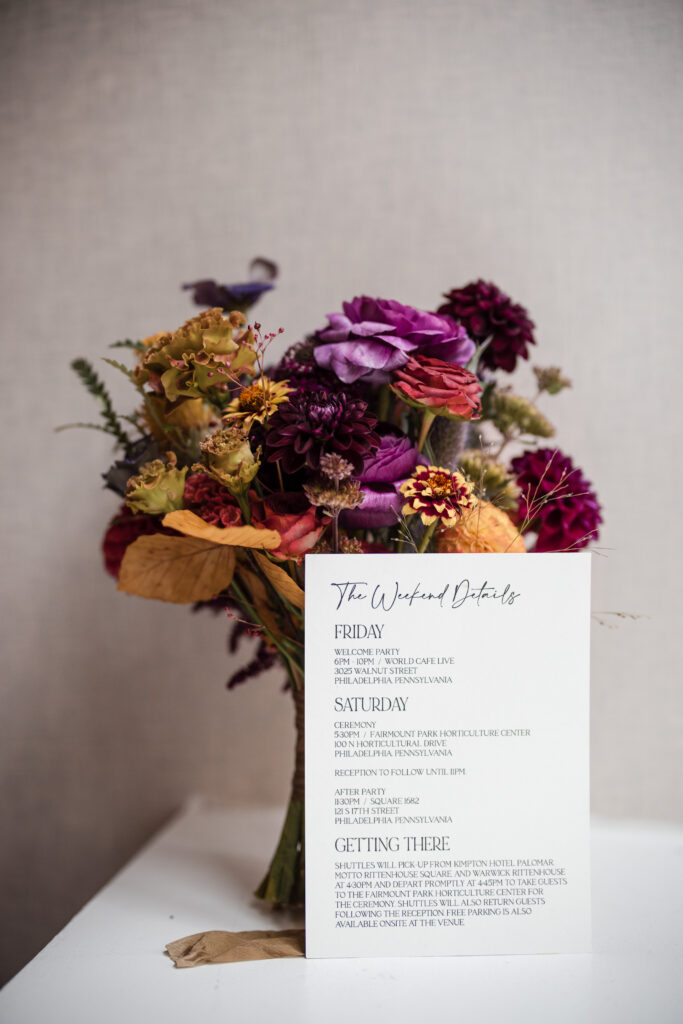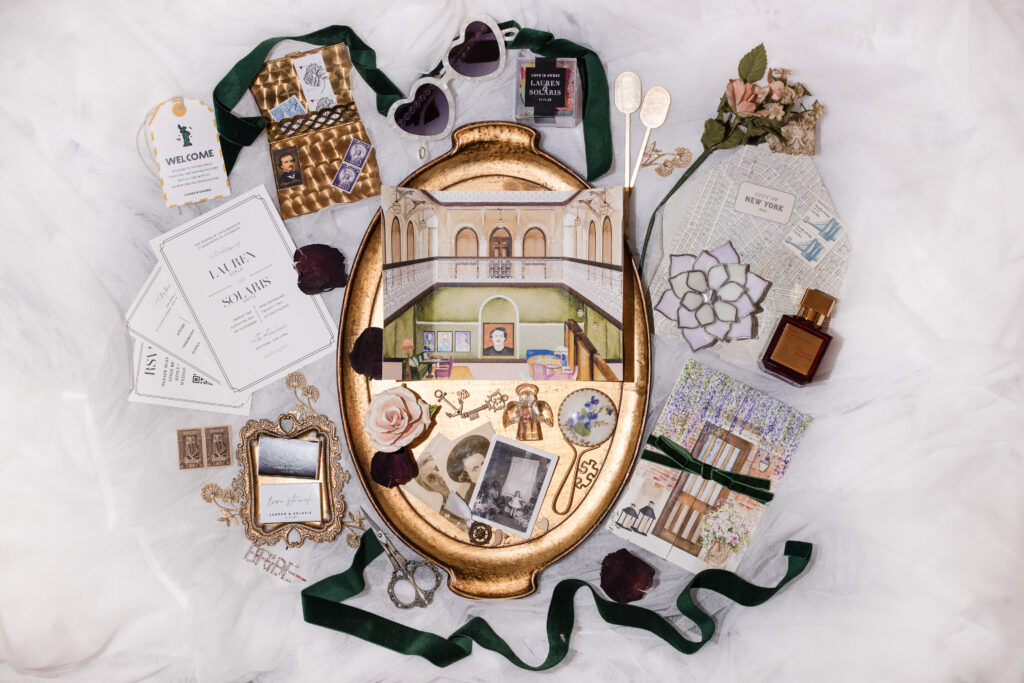When it comes to planning your special day, every detail counts, starting with the wedding invitations. These not only serve as a formal announcement of your upcoming celebration but also provide your guests with a sneak peek into the style and atmosphere of your event. This is why finding the right wedding invitation inspiration is crucial. In this post, I aim to guide couples through the process of selecting elegant and unique invitations that perfectly set the tone for their event, ensuring that their first impression is both memorable and reflective of their personal style.
Understanding Your Wedding Style
Before diving into the vast world of wedding invitations, it’s essential to grasp your wedding’s overarching theme clearly. This initial step is more than just a matter of preference; it’s about setting the stage for your entire celebration. Whether you’re drawn to the timeless elegance of a classic wedding, the sleek sophistication of a modern affair, the natural charm of a rustic celebration, or the nostalgic allure of a vintage-themed event, the style you choose is a reflection of your personal tastes and the atmosphere you wish to create on your special day.
Understanding your wedding’s theme is crucial because it is the foundation for your invitation design. This coherence between your wedding theme and your invitations ensures that your guests receive a cohesive and immersive experience right from the moment they open their invitations. It’s the first taste of what’s to come, setting expectations and building anticipation for the celebration ahead.
Let’s delve deeper into how different wedding styles can influence your choice of wedding invitations, offering a seamless introduction to what your wedding day will entail:
- Classic Wedding Invitations: For those who envision a classic wedding, invitations often feature timeless design elements such as elegant fonts, a neutral color palette, and traditional wording. These invitations exude sophistication and grace, often incorporating fine paper and subtle embellishments that hint at the formal nature of the event.
- Modern Wedding Invitations: Modern weddings call for invitations with clean lines, minimalist designs, and bold typography. Color schemes may be more varied, including stark contrasts or vibrant hues. Using innovative materials or unconventional shapes can also reflect a forward-thinking approach to marriage.
- Rustic Wedding Invitations: Rustic-themed weddings benefit from invitations incorporating natural elements and textures, such as wood, burlap, or recycled paper. Earthy color tones and hand-drawn illustrations of nature can set the tone for a celebration that’s both laid-back and beautifully grounded in nature’s beauty.
- Vintage Wedding Invitations: Invitations for a vintage-themed wedding often draw inspiration from the past, using lace detailing, aged paper, and typography that echoes a bygone era. These designs can transport guests to another time, promising a wedding filled with nostalgic charm and romantic whimsy.
By thoughtfully aligning your wedding invitations with the overall theme of your celebration, you create a sense of unity and expectation. This enhances the guest experience and allows you and your partner to express your unique story and personal style. As we explore the vast possibilities in wedding invitation inspiration, remember that your invitations are more than just paper and ink—they are a heartfelt announcement of your love and the wonderful journey you are about to embark upon together.
Color and Typography Choices
The colors and typography you select for your wedding invitations are more than mere design choices; they are the very essence of the mood and elegance you wish to convey through your celebration. The color scheme of your invitations plays a pivotal role in setting the visual tone for your event, acting as a preview of the aesthetic your guests can expect. By choosing colors that complement your wedding palette, you enhance the visual appeal of your invitations and ensure a seamless and harmonious link between every aspect of your wedding, from the decor to the bridal party attire.
Selecting Your Color Scheme
When selecting a color scheme for your wedding invitations, consider the emotions and atmosphere you wish to evoke. Soft pastels might suggest a romantic and gentle ambiance, while bold, vibrant colors could indicate a lively and festive celebration. Neutral tones, on the other hand, exude timeless elegance and sophistication. It’s essential to think about how these colors will play into the overall theme of your wedding and how they will be perceived by your guests.
Choosing the Right Typography
Typography, the art of arranging type, is equally crucial in conveying the character and formality of your wedding. The fonts you select can significantly impact the readability and aesthetic of your invitations. A well-chosen typeface can add a touch of sophistication, whimsy, or modernity, depending on the style of your wedding. For instance, a classic wedding might benefit from elegant script fonts that evoke a sense of tradition and timelessness, while a modern affair might lean towards clean, sans-serif fonts for a more contemporary look.
Tips for Blending Color and Typography
- Balance and Contrast: Ensure there is enough contrast between your text and background colors for easy readability. Simultaneously, aim for a balanced use of color, where your chosen hues complement rather than compete with each other.
- Consistency is Key: Maintain consistency in your use of color and typography throughout your wedding stationery suite, including save-the-date cards, RSVP cards, and thank-you notes. This coherence will reinforce your wedding’s theme and aesthetic.
- Consider the Season: The time of year your wedding takes place can influence your color and font choices. Spring and summer weddings might call for lighter colors and more whimsical fonts, while fall and winter weddings could lean towards richer colors and more substantial serif fonts.
- Texture and Printing Techniques: How your invitations are printed can also affect how colors and typography are perceived. Techniques like letterpress or foil stamping can add texture and depth, making your design elements pop and adding an extra layer of luxury.
- Samples and Proofs: Before finalizing your invitations, request samples or digital proofs to see how your color and typography choices come together. This step will allow you to make any necessary adjustments to ensure your invitations perfectly capture the essence of your celebration.
By thoughtfully selecting and blending the colors and typography for your wedding invitations, you ensure that your invitation suite truly reflects the mood and elegance of your special day. When harmoniously combined, these elements have the power to tell your story and set the tone for your celebration, ensuring that your wedding invitation inspiration becomes a stunning reality that captivates and delights your guests.
High-Quality Materials and Printing Techniques
The selection of materials and printing techniques for your wedding invitations is a critical decision that goes beyond aesthetics; it’s about making a tangible statement about the significance and exclusivity of your event. High-quality materials and sophisticated printing methods enhance the visual appeal of your invitations and their tactile quality, leaving a lasting impression on your guests. In this segment, we’ll explore the options available and how they contribute to creating wedding invitations that are not just announcements but treasured keepsakes that reflect the gravity and elegance of your special day.
Choosing Luxurious Paper
The paper on which your invitations are printed is the foundation of their design. High-quality paper options range from thick, textured cotton to smooth, heavyweight cardstock, offering a different look and feel. Cotton paper, for example, has a soft, luxurious texture that is ideal for formal weddings, while linen paper provides a subtle, elegant texture that adds depth to your invitations. Other options like vellum add a translucent, delicate touch, offering a layer of sophistication to your wedding stationery.
Printing Techniques that Add Elegance
Beyond the material, the printing technique can significantly affect the overall impact of your invitations. Traditional and contemporary methods offer different advantages, from creating visual depth to adding tactile sensations that elevate the experience of receiving and opening your wedding invitations.
- Letterpress: This classic printing technique involves pressing a raised surface inked with your design into the paper, creating an indented impression. Letterpress printing is renowned for its elegant, timeless feel and adds a level of craftsmanship and texture that is unmistakable.
- Foil Stamping: For a touch of glamour and shine, foil stamping presses metallic foil onto your invitations, creating a striking contrast. This method is perfect for adding luxurious highlights to elements like your names or the wedding date, making them stand out with a shimmering finish.
- Engraving: As one of the most traditional and formal printing methods, engraving offers unmatched depth and precision. The raised text and designs produced by engraving have a distinctive look and feel that conveys the utmost sophistication.
- Thermography: This printing technique creates a similar effect to engraving but at a more affordable cost. Thermography produces raised ink that gives your invitations a textured feel, adding dimension without the expense of traditional engraving.
- Digital Printing: For those seeking versatility and detail in their designs, digital printing allows for a wide range of colors and intricate patterns. While it may not offer the same tactile experience as other methods, digital printing is highly customizable and cost-effective.
Making Your Selection
When selecting materials and printing techniques, consider the overall theme and formality of your wedding and your budget. Requesting samples from stationers can help you feel the texture and see the quality of different options firsthand, aiding in your decision-making process.
Furthermore, combining different materials and printing techniques can create a unique, layered effect that further personalizes your invitations. For example, pairing a delicate vellum overlay with a letterpress invitation adds depth and interest, making your invitation suite unique.
Ultimately, the quality of materials and printing techniques used for your wedding invitations is crucial in setting the tone for your celebration. By choosing options that reflect the importance of your day, you’ll ensure your invitations are beautiful and meaningful symbols of your upcoming union, cherished by you and your guests alike.
Personal Touches and Custom Elements
Incorporating personal touches and custom elements into your wedding invitations is a powerful way to imbue your stationery with your unique story and personality. This approach transforms your invitations from mere announcements into intimate expressions of your love and journey together. Here, we delve into various ways to infuse your wedding invitations with elements that are uniquely ‘you’, offering inspiration to create pieces that resonate deeply with both you and your guests.
Custom Illustrations
Custom illustrations offer a visually captivating way to personalize your wedding invitations. These can range from detailed drawings of significant locations, such as where you first met, got engaged, or plan to hold your wedding, to whimsical renditions of your portraits. An artist can capture the essence of these special places or moments, providing a deeply personal touch that tells a part of your story. Illustrations also extend to botanical designs that reflect your wedding’s theme or flora that has a special meaning to you as a couple, adding a layer of symbolism and beauty to your invitations.
Bespoke Monograms
A bespoke monogram intertwines your initials in a unique design, symbolizing your union in a visually elegant way. This monogram can become a recurring motif throughout your wedding stationery and decor, creating a cohesive and personalized theme. The design of the monogram itself can reflect your style and personality – from classic and traditional to modern and minimalist. Working with a designer to create this custom element ensures that it perfectly captures the essence of your partnership.
Elegant Wax Seals
Wax seals add a touch of historical elegance and charm, making your wedding invitations feel even more special. Customizing these seals with your bespoke monogram or a symbol representing your relationship adds personalization and luxury. The wax color can also complement your wedding color scheme, subtly tying your invitations to the overall aesthetic of your celebration. Applying a wax seal to your invitation envelopes not only secures them in a traditional way but also offers your guests an unforgettable experience as they open their invitations.
Storytelling Through Wording
The wording of your invitations is another avenue for personalization. Instead of sticking strictly to traditional phrases, consider incorporating language that reflects your voice and relationship. You can include quotes, poems, or phrases that hold special meaning to you as a couple or even share a brief anecdote that captures the essence of your bond. This approach makes your invitations feel more intimate and engaging, inviting guests into your story from the moment they read your invitation.
Incorporating Shared Interests or Hobbies
Incorporating these elements into your wedding invitations can add a playful and personal touch for couples with shared interests or hobbies that play a significant role in their relationship. Whether it’s a love for travel, literature, music, or nature, these interests can inspire design elements, motifs, or thematic touches that reflect your passions and experiences together.
Interactive Elements
Adding interactive elements to your invitations, such as detachable RSVP cards designed as postcards from your favorite travel destinations or a small, fold-out timeline of your relationship, invites guests to engage with your story in a tactile and memorable way. These creative inclusions personalize your invitations and enhance the anticipation and excitement for your upcoming celebration.
You create a meaningful and lasting impression by thoughtfully incorporating personal touches and custom elements into your wedding invitations. This level of personalization makes your invitations stand out and sets a deeply personal tone for your wedding, celebrating your unique love story in every detail.
Wording and Etiquette
Crafting the wording for your wedding invitations is a delicate task that intertwines tradition with personal expression. It’s about striking the perfect balance between the formalities that wedding etiquette prescribes and the personal touches that make an invitation genuinely reflective of the couple. This section guides you through the nuances of invitation wording, addressing envelopes, and managing RSVPs with the elegance and attention to detail that such a momentous occasion deserves.
Formulating Your Invitation Wording
The wording of your wedding invitations sets the tone for your event and communicates essential details to your guests. Begin with the host line, traditionally the names of those hosting, which introduces the invitation with grace. Following the host line, include the request line inviting your guests to the wedding. Here, the language can range from the traditional “request the honor of your presence” for religious ceremonies to “invite you to celebrate the wedding” for a less formal affair.
Next, clearly state the names of the couple getting married. Modern couples often choose to forego titles and last names, especially if they’re well-known to their invitees, but including full names adds a formal touch. The details section follows, listing the ceremony’s date, time, and location. For clarity and elegance, spell out dates (“the fifth of June” rather than “June 5th”) and times (“half past four in the afternoon” over “4:30 p.m.”).
The final part of the invitation should include any additional information, such as the reception details. This should be clearly communicated if the reception is at a different location or later. Consider using a separate card for reception details for a cohesive and elegant look, especially if the information is extensive.
Addressing Envelopes with Elegance
How you address your invitation envelopes is an opportunity to honor your guests and the formality of the occasion. Traditional etiquette suggests using full names and titles (“Mr. and Mrs. John Smith”) and spelling out everything, including state names and street addresses. For unmarried couples living together or families, each name should be listed on a separate line. Modern etiquette allows for a more relaxed approach, focusing on inclusivity and respect for all relationship types and living situations.
Managing RSVPs with Grace and Precision
The RSVP card is a crucial component of your wedding invitation suite, facilitating a smooth process for confirming guest attendance. Consider including a pre-addressed and stamped return envelope to make it easy for your guests to respond. The wording on your RSVP cards should mirror the tone of your invitations, providing options for guests to indicate their attendance. Including a line for the guest’s name(s) and checkboxes for acceptance or regret simplifies the process. For a personal touch, you might leave space for a personal message or meal preferences if catering requires.
The deadline for RSVPs should be clear, typically three to four weeks before the wedding date, allowing you ample time to finalize seating arrangements and communicate with your vendors. Monitoring responses and following up with guests who haven’t replied by the deadline is essential for final headcounts.
By carefully considering each element of your wedding invitation wording, envelope addressing, and RSVP management, you ensure that your invitations are a beacon of elegance and a reflection of your values and the inclusivity of your celebration. This thoughtful approach guarantees that your invitation message resonates clearly and beautifully with all your guests, setting the stage for a memorable and harmonious event.
Eco-Friendly and Digital Alternatives
For couples passionate about sustainability and wishing to reflect this value in their wedding preparations, considering eco-friendly and digital alternatives for wedding invitations is a meaningful step. This commitment to the environment doesn’t mean you have to compromise on the elegance or exclusivity of your wedding stationery. In this section, we’ll delve into how you can select sustainable options that are both sophisticated and kind to the planet, offering wedding invitation inspiration for those looking to make a positive impact.
Eco-Friendly Paper Invitations
Choosing invitations made from recycled materials is a fantastic way to reduce your wedding’s environmental footprint. Many paper suppliers now offer high-quality recycled paper that looks and feels as luxurious as its non-recycled counterparts. Look for options that use post-consumer waste, and pay attention to certifications like FSC (Forest Stewardship Council) to ensure the materials are sourced responsibly.
Beyond recycled paper, there are also innovative materials like seed paper, which guests can plant after receiving your invitation, resulting in beautiful wildflowers or herbs. This choice minimizes waste and creates a lasting memory of your wedding day. Bamboo, hemp, and cotton rag papers are other sustainable alternatives that offer a unique texture and weight, contributing to the tactile experience of your invitation while being environmentally friendly.
Elegant Digital Invitations
Digital invitations have come a long way in terms of design and functionality, offering a sophisticated and eco-conscious choice for modern couples. With no physical production or mailing required, digital invitations eliminate paper waste and carbon emissions associated with traditional invitations. They also allow for dynamic elements like animation, music, and interactive links, adding a modern twist to your wedding announcement.
Platforms specializing in digital wedding invitations provide a wide range of customizable templates that can match any wedding theme or aesthetic. These digital platforms often include features for easy RSVP management, reminders, and updates, streamlining the communication process with your guests.
Maintaining Exclusivity and Sophistication
The key to maintaining a sense of exclusivity and sophistication with eco-friendly and digital invitations lies in design and personalization. For paper-based options, working with a designer specializing in sustainable stationery can help you create a bespoke invitation that reflects your style and commitment to the environment. Incorporate elements like calligraphy, custom illustrations, or a unique monogram to add a personal and upscale touch.
For digital invitations, choose designs that resonate with the elegance of your event. Customize your invitations with your color scheme, fonts that reflect your wedding’s tone, and personal details that tell your story. Including a personal message or video can also enhance the sense of intimacy and exclusivity, making each guest feel personally welcomed to your celebration.
Conclusion
Wedding invitations are more than just pieces of paper; they are the first chapter in the story of your special day. As such, dedicating time to finding or designing invitations that truly reflect your style and love story is invaluable. This guide has given you the necessary wedding invitation inspiration to make an informed decision, emphasizing the importance of elegance, uniqueness, and personal significance. Remember, the journey to finding the perfect wedding invitation is also an opportunity to express your creativity and bond as a couple. With the right approach and professional guidance, your invitations will undoubtedly leave a lasting impression on everyone receiving them.
